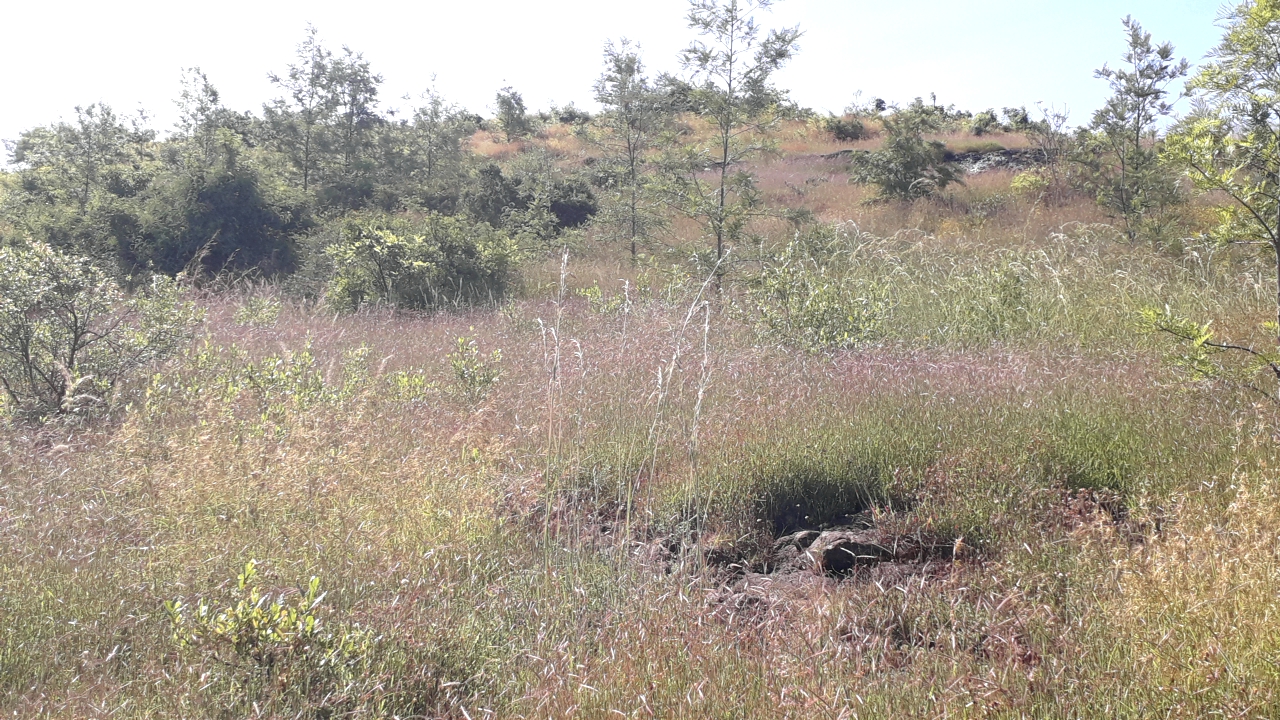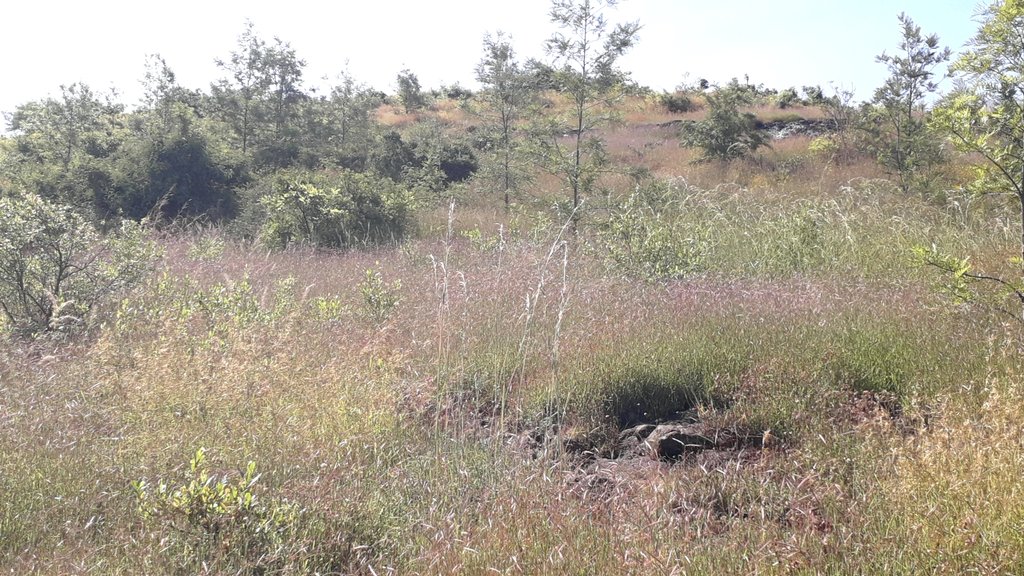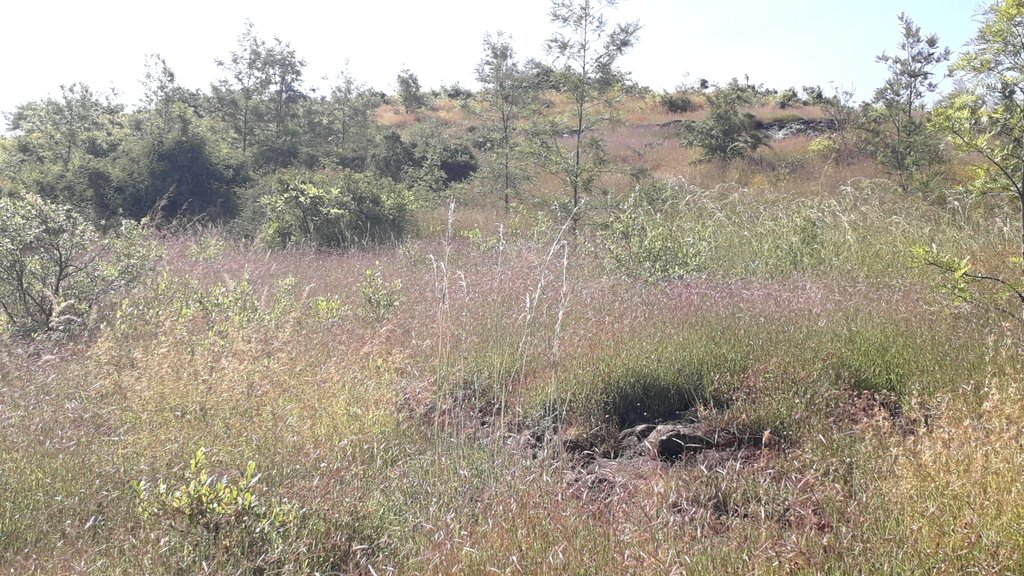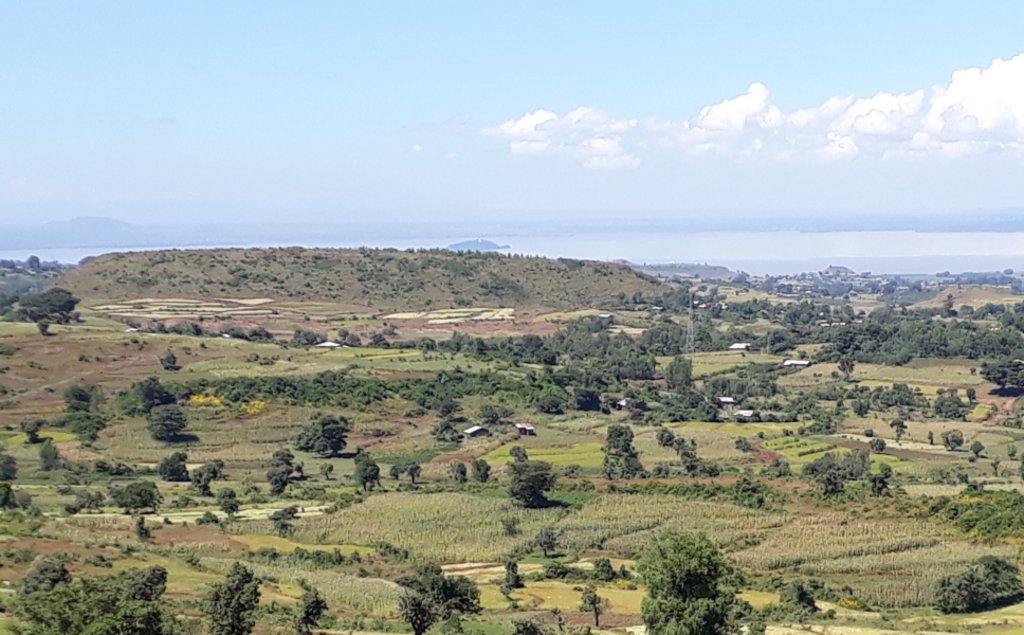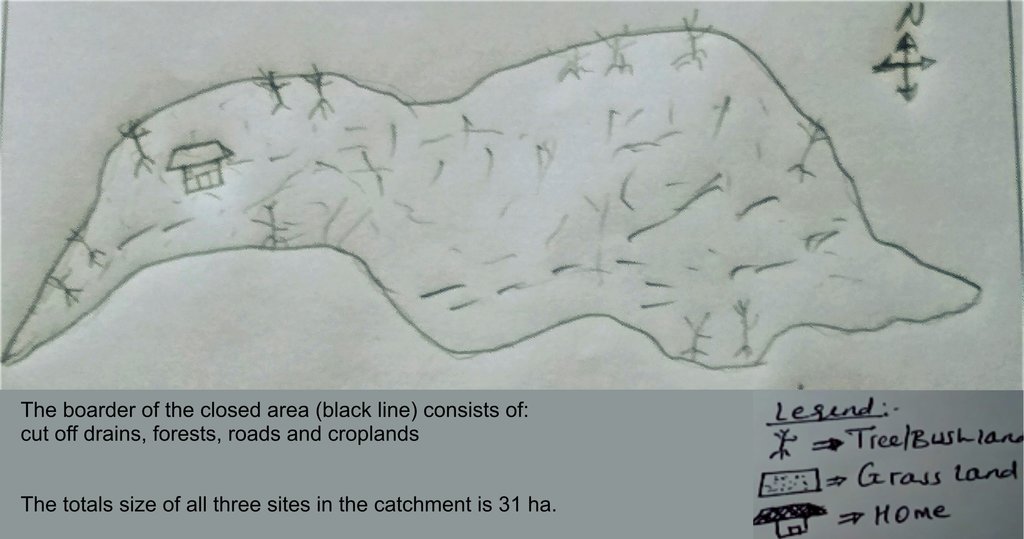Community-Based Closed Area Management [Ethiopia]
- Creation:
- Update:
- Compiler: Bekalu Bitew
- Editor: –
- Reviewer: Tatenda Lemann
Area Closure
technologies_4135 - Ethiopia
View sections
Expand all Collapse all1. General information
1.2 Contact details of resource persons and institutions involved in the assessment and documentation of the Technology
Name of project which facilitated the documentation/ evaluation of the Technology (if relevant)
Carbon Benefits Project (CBP)Name of the institution(s) which facilitated the documentation/ evaluation of the Technology (if relevant)
Bureau of Agriculture - Amhara Nation Regional State - Bahir Dar (amhboard) - EthiopiaName of the institution(s) which facilitated the documentation/ evaluation of the Technology (if relevant)
Water and Land Resource Centre (WLRC) - EthiopiaName of the institution(s) which facilitated the documentation/ evaluation of the Technology (if relevant)
CDE Centre for Development and Environment (CDE Centre for Development and Environment) - Switzerland1.3 Conditions regarding the use of data documented through WOCAT
The compiler and key resource person(s) accept the conditions regarding the use of data documented through WOCAT:
Yes
1.4 Declaration on sustainability of the described Technology
Is the Technology described here problematic with regard to land degradation, so that it cannot be declared a sustainable land management technology?
No
1.5 Reference to Questionnaire(s) on SLM Approaches (documented using WOCAT)
2. Description of the SLM Technology
2.1 Short description of the Technology
Definition of the Technology:
Area closure is a protection system to improve land with degraded vegetation and/or soil, by excluding livestock grazing and applying initial inputs and continuous maintenance. Once recovery is taking place through natural regeneration, area closures can become part of the agricultural system, thereby improving forage quantity and quality and also enhancing the fertility of land.
2.2 Detailed description of the Technology
Description:
1. The area closure technology has been applied in community-based watershed development in Abagerima since 2012.
2. The area was closed from livestock free grazing, allowing grasses, bushes and trees to recover, thereby conserving soil and water, improving soil moisture, and preventing on- and off-site erosion.
3. Area closures serve as buffer zone by preventing siltation, acting as meteorological regulator, enhancing the water cycle, and improving the productivity of the land.
4. Generally, area closures can enhance the livelihoods of the community in social. economic, political. environmental and cultural aspects.
5. The major activity at the beginning is to create community awareness about the technology. After that, construction of trenches, planting of trees (e.g. grevillea rubusta) and some maintenance is needed.
6. Area closures have many benefits, like economical, reducing conflicts, etc., and most land users know these benefits and thus accept the technology.
2.3 Photos of the Technology
General remarks regarding photos:
The photos were all taken during field work on 24 October 2018, while several technologies were assessed by different compilers. In the Abagerima area a full watershed was developed in 2013 by the Water and Land Resource Centre, Addis Ababa University and Centre for Development and Environment (CDE), University of Bern, funded by Swiss Development Cooperation and its Ethiopian partners.
2.5 Country/ region/ locations where the Technology has been applied and which are covered by this assessment
Country:
Ethiopia
Region/ State/ Province:
Amhara Region, West Gojam Zone, Bahir Dar Zurya
Further specification of location:
near Bahirdar, the capital of Amhara region
Specify the spread of the Technology:
- evenly spread over an area
If the Technology is evenly spread over an area, specify area covered (in km2):
0.1
If precise area is not known, indicate approximate area covered:
- 0.1-1 km2
Is/are the technology site(s) located in a permanently protected area?
No
Map
×2.6 Date of implementation
Indicate year of implementation:
2012
If precise year is not known, indicate approximate date:
- less than 10 years ago (recently)
2.7 Introduction of the Technology
Specify how the Technology was introduced:
- through projects/ external interventions
Comments (type of project, etc.):
Water and Land Resource Centre Project
3. Classification of the SLM Technology
3.1 Main purpose(s) of the Technology
- improve production
- reduce, prevent, restore land degradation
- conserve ecosystem
- protect a watershed/ downstream areas – in combination with other Technologies
- create beneficial social impact
3.2 Current land use type(s) where the Technology is applied
Land use mixed within the same land unit:
Yes
Specify mixed land use (crops/ grazing/ trees):
- Silvo-pastoralism

Grazing land
Intensive grazing/ fodder production:
- Cut-and-carry/ zero grazing
- Improved pastures
Animal type:
- cattle - dairy
- cattle - non-dairy beef
- goats
- horses
- mules and asses
- poultry
- sheep
Is integrated crop-livestock management practiced?
No
Products and services:
- eggs
- milk
- skins/ hides
- transport/ draught
Species:
cattle - non-dairy working
Count:
1656
Species:
mules and asses
Count:
600
Species:
sheep
Count:
280
Species:
goats
Count:
180
Species:
poultry
Count:
4300

Forest/ woodlands
- Tree plantation, afforestation
Type of tree:
- Acacia senegal
- Grevillea robusta
Are the trees specified above deciduous or evergreen?
- mixed deciduous/ evergreen
Products and services:
- Timber
- Fuelwood
- Nature conservation/ protection
Comments:
Livestock population for the whole watershed
3.3 Has land use changed due to the implementation of the Technology?
Has land use changed due to the implementation of the Technology?
- Yes (Please fill out the questions below with regard to the land use before implementation of the Technology)
Land use mixed within the same land unit:
No

Grazing land
Extensive grazing:
- Ranching
Intensive grazing/ fodder production:
- Cut-and-carry/ zero grazing
- Improved pastures
Animal type:
- cattle - dairy
- cattle - non-dairy beef
- cattle - non-dairy working
- goats
- horses
- mules and asses
- poultry
- sheep
Is integrated crop-livestock management practiced?
No
Products and services:
- eggs
- meat
- transport/ draught

Waterways, waterbodies, wetlands
- Drainage lines, waterways
3.4 Water supply
Water supply for the land on which the Technology is applied:
- rainfed
3.5 SLM group to which the Technology belongs
- area closure (stop use, support restoration)
3.6 SLM measures comprising the Technology

agronomic measures
- A1: Vegetation/ soil cover
- A2: Organic matter/ soil fertility
- A5: Seed management, improved varieties

vegetative measures
- V1: Tree and shrub cover
- V2: Grasses and perennial herbaceous plants

structural measures
- S2: Bunds, banks
- S3: Graded ditches, channels, waterways
- S4: Level ditches, pits

management measures
- M2: Change of management/ intensity level
- M3: Layout according to natural and human environment
- M5: Control/ change of species composition
3.7 Main types of land degradation addressed by the Technology

soil erosion by water
- Wt: loss of topsoil/ surface erosion
- Wg: gully erosion/ gullying

soil erosion by wind
- Et: loss of topsoil
- Ed: deflation and deposition

physical soil deterioration
- Pc: compaction

biological degradation
- Bc: reduction of vegetation cover
- Bh: loss of habitats
- Bs: quality and species composition/ diversity decline

water degradation
- Hs: change in quantity of surface water
- Hp: decline of surface water quality
3.8 Prevention, reduction, or restoration of land degradation
Specify the goal of the Technology with regard to land degradation:
- prevent land degradation
- restore/ rehabilitate severely degraded land
4. Technical specifications, implementation activities, inputs, and costs
4.1 Technical drawing of the Technology
Technical specifications (related to technical drawing):
This picture represents a typical sample of a closed area within Abagerima Watershed. Unlike for the described technology there are no hillside terraces shown in this sketch, while the technology contains such structures for tree planting.
Author:
Bekalu Bitew
Date:
24/10/2018
4.2 General information regarding the calculation of inputs and costs
Specify how costs and inputs were calculated:
- per Technology area
Indicate size and area unit:
11 ha
Specify currency used for cost calculations:
- USD
Indicate average wage cost of hired labour per day:
3.0
4.3 Establishment activities
| Activity | Timing (season) | |
|---|---|---|
| 1. | surveying | October (after the main rainy season) |
| 2. | preparing materials | October |
| 3. | community awareness | October |
| 4. | design and layout the structure | November |
| 5. | implementation | December to February (main dry season) |
4.4 Costs and inputs needed for establishment
| Specify input | Unit | Quantity | Costs per Unit | Total costs per input | % of costs borne by land users | |
|---|---|---|---|---|---|---|
| Labour | hillside terraces (13 x 400 m) | person-days | 65.0 | 3.0 | 195.0 | 75.0 |
| Equipment | hand tools | Number | 100.0 | 3.0 | 300.0 | 50.0 |
| Equipment | waterlevel | Number | 24.0 | 4.0 | 96.0 | |
| Plant material | seedling | number | 2500.0 | 0.5 | 1250.0 | 50.0 |
| Plant material | seed | Kg | 50.0 | 2.0 | 100.0 | 50.0 |
| Plant material | preparing pit | Number | 2500.0 | 0.04 | 100.0 | 100.0 |
| Total costs for establishment of the Technology | 2041.0 | |||||
| Total costs for establishment of the Technology in USD | 2041.0 | |||||
If land user bore less than 100% of costs, indicate who covered the remaining costs:
Water and Land Resource Centre (WLRC) and Government
4.5 Maintenance/ recurrent activities
| Activity | Timing/ frequency | |
|---|---|---|
| 1. | trench | March (before rainy season) |
| 2. | planting tree seedlings | July and August (height of rainy season) |
4.6 Costs and inputs needed for maintenance/ recurrent activities (per year)
| Specify input | Unit | Quantity | Costs per Unit | Total costs per input | % of costs borne by land users | |
|---|---|---|---|---|---|---|
| Labour | Hillside terraces | person-days | 15.0 | 3.0 | 45.0 | 75.0 |
| Plant material | planting tree seedlings | Number | 2600.0 | 0.04 | 104.0 | 49.0 |
| Total costs for maintenance of the Technology | 149.0 | |||||
| Total costs for maintenance of the Technology in USD | 149.0 | |||||
If land user bore less than 100% of costs, indicate who covered the remaining costs:
Water and Land Resource Centre (WLRC) and Government
4.7 Most important factors affecting the costs
Describe the most determinate factors affecting the costs:
labour availability and timing
5. Natural and human environment
5.1 Climate
Annual rainfall
- < 250 mm
- 251-500 mm
- 501-750 mm
- 751-1,000 mm
- 1,001-1,500 mm
- 1,501-2,000 mm
- 2,001-3,000 mm
- 3,001-4,000 mm
- > 4,000 mm
Specify average annual rainfall (if known), in mm:
1300.00
Specifications/ comments on rainfall:
there is a raingauge nearby
Indicate the name of the reference meteorological station considered:
Abagerima
Agro-climatic zone
- sub-humid
The rainfall is seasonal, from April to November and a main period in July to August
5.2 Topography
Slopes on average:
- flat (0-2%)
- gentle (3-5%)
- moderate (6-10%)
- rolling (11-15%)
- hilly (16-30%)
- steep (31-60%)
- very steep (>60%)
Landforms:
- plateau/plains
- ridges
- mountain slopes
- hill slopes
- footslopes
- valley floors
Altitudinal zone:
- 0-100 m a.s.l.
- 101-500 m a.s.l.
- 501-1,000 m a.s.l.
- 1,001-1,500 m a.s.l.
- 1,501-2,000 m a.s.l.
- 2,001-2,500 m a.s.l.
- 2,501-3,000 m a.s.l.
- 3,001-4,000 m a.s.l.
- > 4,000 m a.s.l.
Indicate if the Technology is specifically applied in:
- not relevant
5.3 Soils
Soil depth on average:
- very shallow (0-20 cm)
- shallow (21-50 cm)
- moderately deep (51-80 cm)
- deep (81-120 cm)
- very deep (> 120 cm)
Soil texture (topsoil):
- coarse/ light (sandy)
Soil texture (> 20 cm below surface):
- medium (loamy, silty)
Topsoil organic matter:
- low (<1%)
5.4 Water availability and quality
Ground water table:
5-50 m
Availability of surface water:
medium
Water quality (untreated):
poor drinking water (treatment required)
Water quality refers to:
both ground and surface water
Is water salinity a problem?
No
Is flooding of the area occurring?
Yes
Regularity:
episodically
Comments and further specifications on water quality and quantity:
'Flooding' relates to immediate surface runoff during heavy storms
5.5 Biodiversity
Species diversity:
- medium
Habitat diversity:
- low
5.6 Characteristics of land users applying the Technology
Sedentary or nomadic:
- Sedentary
Market orientation of production system:
- subsistence (self-supply)
- mixed (subsistence/ commercial)
Off-farm income:
- less than 10% of all income
Relative level of wealth:
- average
Individuals or groups:
- individual/ household
- groups/ community
Level of mechanization:
- manual work
Gender:
- men
Age of land users:
- youth
- middle-aged
Indicate other relevant characteristics of the land users:
Other land users mostly have the same characteristics.
5.7 Average area of land used by land users applying the Technology
- < 0.5 ha
- 0.5-1 ha
- 1-2 ha
- 2-5 ha
- 5-15 ha
- 15-50 ha
- 50-100 ha
- 100-500 ha
- 500-1,000 ha
- 1,000-10,000 ha
- > 10,000 ha
Is this considered small-, medium- or large-scale (referring to local context)?
- small-scale
5.8 Land ownership, land use rights, and water use rights
Land ownership:
- state
Land use rights:
- communal (organized)
- individual
Water use rights:
- communal (organized)
- individual
Are land use rights based on a traditional legal system?
No
5.9 Access to services and infrastructure
health:
- poor
- moderate
- good
education:
- poor
- moderate
- good
technical assistance:
- poor
- moderate
- good
employment (e.g. off-farm):
- poor
- moderate
- good
markets:
- poor
- moderate
- good
energy:
- poor
- moderate
- good
roads and transport:
- poor
- moderate
- good
drinking water and sanitation:
- poor
- moderate
- good
financial services:
- poor
- moderate
- good
6. Impacts and concluding statements
6.1 On-site impacts the Technology has shown
Socio-economic impacts
Production
fodder production
fodder quality
animal production
wood production
forest/ woodland quality
non-wood forest production
Comments/ specify:
we refer to grass production
risk of production failure
product diversity
production area
land management
Comments/ specify:
closed area management needs more rules and regulations and cannot be freely managed any more
energy generation
Comments/ specify:
collection of scrubs and deadwood as wood for cooking
Water availability and quality
drinking water availability
drinking water quality
water availability for livestock
water quality for livestock
Income and costs
workload
Socio-cultural impacts
food security/ self-sufficiency
health situation
land use/ water rights
cultural opportunities
recreational opportunities
community institutions
national institutions
SLM/ land degradation knowledge
conflict mitigation
situation of socially and economically disadvantaged groups
Ecological impacts
Water cycle/ runoff
water quantity
water quality
harvesting/ collection of water
surface runoff
excess water drainage
groundwater table/ aquifer
evaporation
Comments/ specify:
we refer to evapotranspiration
Soil
soil moisture
soil cover
soil loss
soil accumulation
soil compaction
nutrient cycling/ recharge
salinity
soil organic matter/ below ground C
acidity
Biodiversity: vegetation, animals
Vegetation cover
biomass/ above ground C
plant diversity
invasive alien species
animal diversity
beneficial species
habitat diversity
pest/ disease control
Climate and disaster risk reduction
flood impacts
Comments/ specify:
we refer to immediate surface runoff during storms
landslides/ debris flows
drought impacts
impacts of cyclones, rain storms
emission of carbon and greenhouse gases
fire risk
wind velocity
micro-climate
6.2 Off-site impacts the Technology has shown
water availability
reliable and stable stream flows in dry season
downstream flooding
downstream siltation
groundwater/ river pollution
buffering/ filtering capacity
wind transported sediments
damage on neighbours' fields
damage on public/ private infrastructure
impact of greenhouse gases
6.3 Exposure and sensitivity of the Technology to gradual climate change and climate-related extremes/ disasters (as perceived by land users)
Gradual climate change
Gradual climate change
| Season | increase or decrease | How does the Technology cope with it? | |
|---|---|---|---|
| annual temperature | increase | moderately | |
| seasonal temperature | dry season | increase | moderately |
| seasonal rainfall | dry season | decrease | moderately |
Climate-related extremes (disasters)
Meteorological disasters
| How does the Technology cope with it? | |
|---|---|
| tropical storm | well |
| local rainstorm | well |
| local thunderstorm | well |
| local hailstorm | well |
Hydrological disasters
| How does the Technology cope with it? | |
|---|---|
| flash flood | well |
Biological disasters
| How does the Technology cope with it? | |
|---|---|
| epidemic diseases | moderately |
| insect/ worm infestation | moderately |
6.4 Cost-benefit analysis
How do the benefits compare with the establishment costs (from land users’ perspective)?
Short-term returns:
negative
Long-term returns:
positive
How do the benefits compare with the maintenance/ recurrent costs (from land users' perspective)?
Short-term returns:
slightly positive
Long-term returns:
very positive
6.5 Adoption of the Technology
- 11-50%
If available, quantify (no. of households and/ or area covered):
480 in Abagerima Watershed
Of all those who have adopted the Technology, how many did so spontaneously, i.e. without receiving any material incentives/ payments?
- 51-90%
Comments:
WLRC project and government allocate some resources to the community, e.g., water levels and some hand tools
6.6 Adaptation
Has the Technology been modified recently to adapt to changing conditions?
No
6.7 Strengths/ advantages/ opportunities of the Technology
| Strengths/ advantages/ opportunities in the land user’s view |
|---|
| Area closures prevent and protect from runoff which creates an on-site and off-site erosion problem. |
| Uncultivated land is protected from free grazing, it increase land productivity and regeneration of natural vegetation species. |
| Closed area management generates income for poorer land users, and it thus reduces conflicts among neighboring communities. |
| Strengths/ advantages/ opportunities in the compiler’s or other key resource person’s view |
|---|
| The closed area management technology has economical, political, social, cultural and environmental benefits. |
6.8 Weaknesses/ disadvantages/ risks of the Technology and ways of overcoming them
| Weaknesses/ disadvantages/ risks in the land user’s view | How can they be overcome? |
|---|---|
| land users cannot freely graze their livestock any more | give extension service |
| Closed areas are a job burden on females who cut and carry grass and wood | create awareness to organise work jointly |
| allocation of resources and management of livestock is not organised well | consider resource allocation per livestock |
| Weaknesses/ disadvantages/ risks in the compiler’s or other key resource person’s view | How can they be overcome? |
|---|---|
| Area closures create job burdens on females | introduce gender equality discussions |
7. References and links
7.1 Methods/ sources of information
- field visits, field surveys
During field day local land users were approached and issues discussed. The compiler himself is currently doing field work for his master's thesis in the area.
- interviews with land users
No formal interviews, but spontaneous discussions were held
- interviews with SLM specialists/ experts
The Abagerima WLRC technician was present in the field and provided information as required, since he had several years of experience in the watershed.
When were the data compiled (in the field)?
24/10/2018
Comments:
All information was compiled in the field.
7.2 References to available publications
Title, author, year, ISBN:
none
7.3 Links to relevant online information
Title/ description:
none
7.4 General comments
WOCAT is interesting.because it provides a standardized format and makes technologies comparable between watersheds, regions, nations and continents. The structured approach helps saving time and money.
Links and modules
Expand all Collapse allLinks
No links


